Serotonin and neurotensin inputs in the vCA1 dictate opposing social valence
- PMID: 40307550
- PMCID: PMC12137126
- DOI: 10.1038/s41586-025-08809-2
Serotonin and neurotensin inputs in the vCA1 dictate opposing social valence
Abstract
The ability to evaluate valence of a social agent based on social experience is essential for an animal's survival in its social group1. Although hippocampal circuits have been implicated in distinguishing novel and familiar conspecifics2-7, it remains unclear how social valence is constructed on the basis of social history and what mechanisms underlie the heightened valence versatility in dynamic relationships. Here we demonstrate that the ventral (v)CA1 integrates serotonin (5-HT) inputs from the dorsal raphe and neurotensin inputs from the paraventricular nucleus of the thalamus (PVT) to determine positive or negative valence of conspecific representations. Specifically, during an appetitive social interaction 5-HT is released into the vCA1 and disinhibits pyramidal neurons through 5-HT1B receptors, whereas neurotensin is released during an aversive social interaction and potentiates vCA1 neurons directly through NTR1s. Optogenetic silencing of dorsal raphe 5-HT and PVT neurotensin inputs into the vCA1 impairs positive and negative social valence, respectively, and excitation flexibly switches valence assignment. These results show how aversive and rewarding social experiences are linked to conspecific identity through converging dorsal raphe 5-HT and PVT neurotensin signals in the vCA1 that instruct opposing valence, and represent a synaptic switch for flexible social valence computation.
© 2025. The Author(s).
Conflict of interest statement
Competing interests: The authors declare no competing interests.
Figures
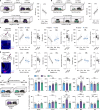

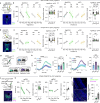



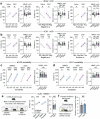


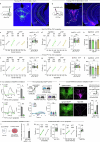



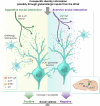
Similar articles
-
5-HT modulation of a medial septal circuit tunes social memory stability.Nature. 2021 Nov;599(7883):96-101. doi: 10.1038/s41586-021-03956-8. Epub 2021 Oct 6. Nature. 2021. PMID: 34616037 Free PMC article.
-
Ventral CA1 neurons store social memory.Science. 2016 Sep 30;353(6307):1536-1541. doi: 10.1126/science.aaf7003. Science. 2016. PMID: 27708103 Free PMC article.
-
Dorsal raphe serotonin neurons inhibit operant responding for reward via inputs to the ventral tegmental area but not the nucleus accumbens: evidence from studies combining optogenetic stimulation and serotonin reuptake inhibition.Neuropsychopharmacology. 2019 Mar;44(4):793-804. doi: 10.1038/s41386-018-0271-x. Epub 2018 Nov 12. Neuropsychopharmacology. 2019. PMID: 30420603 Free PMC article.
-
[Role of Median Raphe Serotonergic Neurons in Positive and Negative Information Processing].Yakugaku Zasshi. 2025;145(2):79-84. doi: 10.1248/yakushi.24-00150. Yakugaku Zasshi. 2025. PMID: 39894484 Review. Japanese.
-
Do dorsal raphe 5-HT neurons encode "beneficialness"?Neurobiol Learn Mem. 2016 Nov;135:40-49. doi: 10.1016/j.nlm.2016.08.008. Epub 2016 Aug 18. Neurobiol Learn Mem. 2016. PMID: 27544850 Review.
Cited by
-
Dual mechanotherapy for the treatment of cardiac fibrosis.Nat Rev Cardiol. 2025 Jul;22(7):465. doi: 10.1038/s41569-025-01172-9. Nat Rev Cardiol. 2025. PMID: 40389760 No abstract available.
-
Concerted actions of distinct serotonin neurons orchestrate female pup care behavior.bioRxiv [Preprint]. 2025 Aug 1:2025.07.31.667987. doi: 10.1101/2025.07.31.667987. bioRxiv. 2025. PMID: 40766669 Free PMC article. Preprint.
-
Concerted actions of distinct serotonin neurons orchestrate female pup care behavior.Res Sq [Preprint]. 2025 Aug 4:rs.3.rs-7134286. doi: 10.21203/rs.3.rs-7134286/v1. Res Sq. 2025. PMID: 40799751 Free PMC article. Preprint.
-
Deficiency of calretinin in prefrontal cortex causes behavioral deficits relevant to autism spectrum disorder in mice.Mol Brain. 2025 Jul 12;18(1):61. doi: 10.1186/s13041-025-01233-7. Mol Brain. 2025. PMID: 40652246 Free PMC article.
References
MeSH terms
Substances
Grants and funding
LinkOut - more resources
Full Text Sources
Molecular Biology Databases
Miscellaneous

